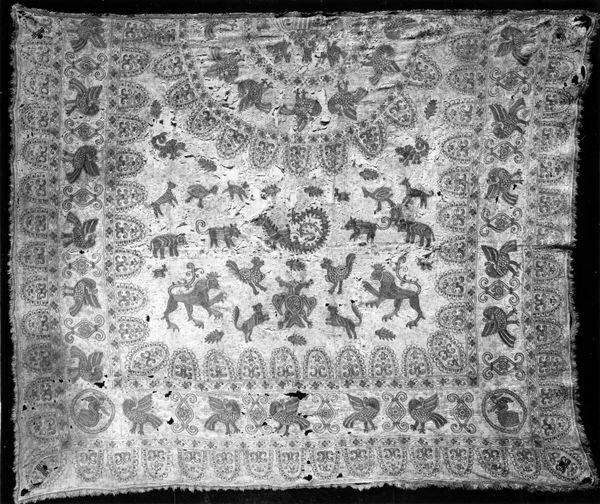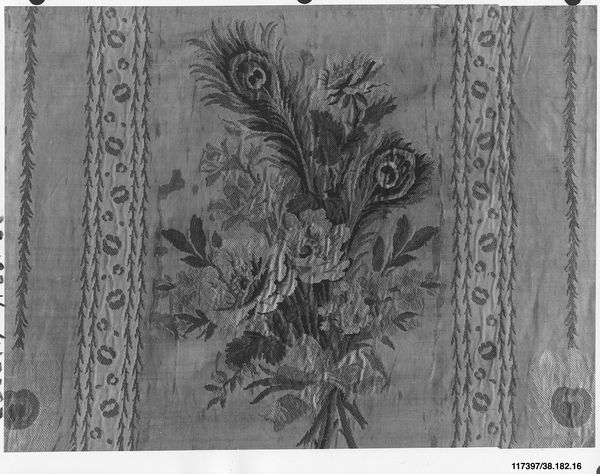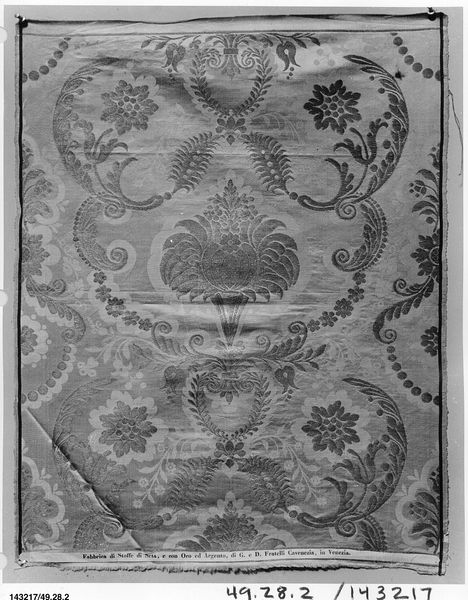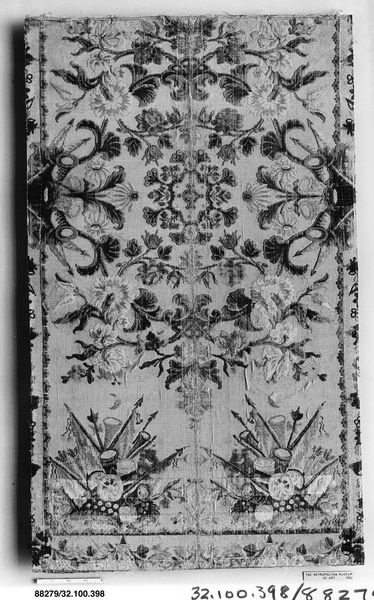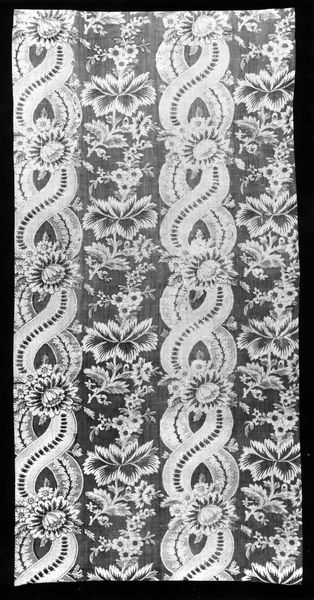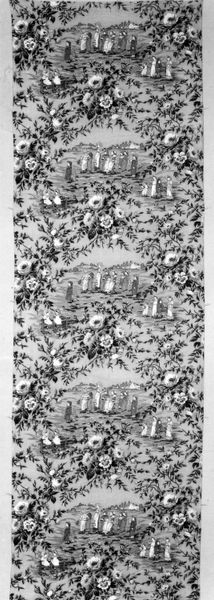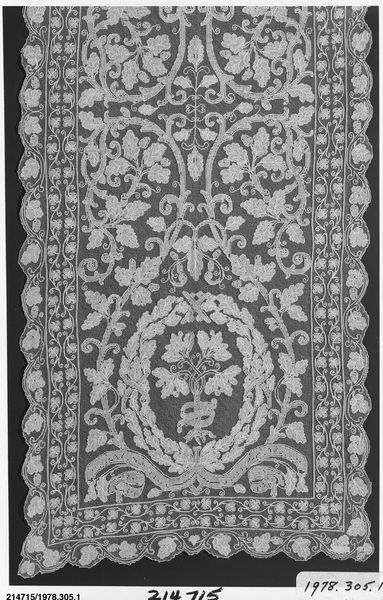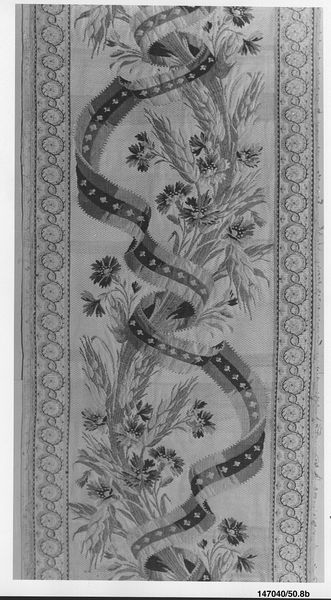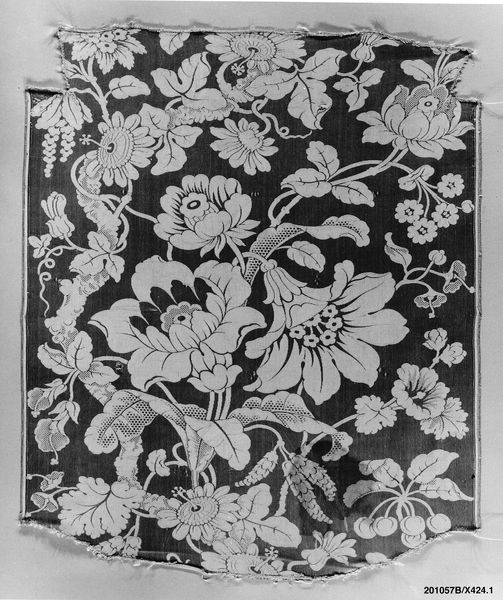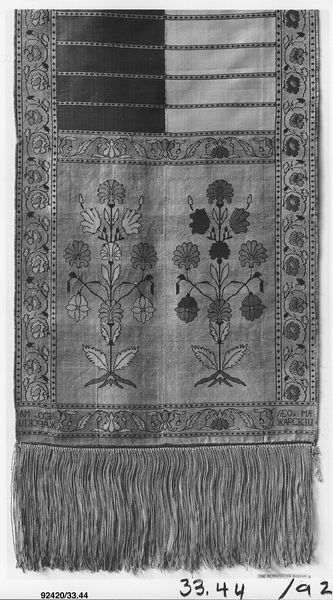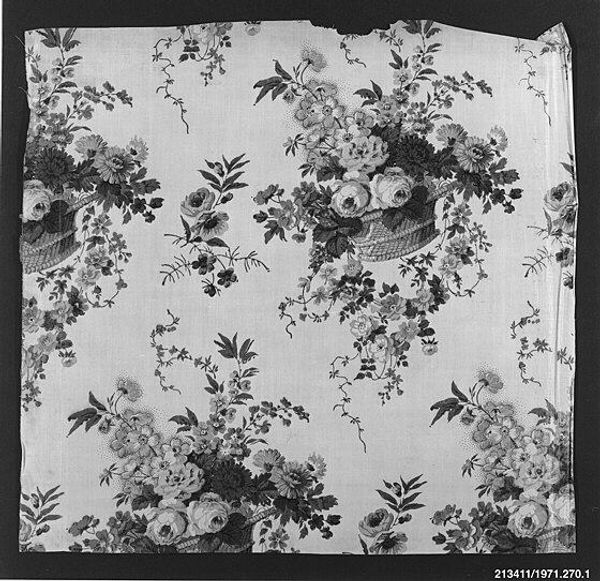
fibre-art, weaving, textile, paper
#
fibre-art
#
asian-art
#
weaving
#
textile
#
paper
Dimensions: 235.8 × 252.2 cm (92 1/2 × 99 1/4 in.)
Copyright: Public Domain
Curator: Here at the Art Institute of Chicago, we have an exquisite textile artwork that I'd like to share with you: a bed curtain believed to originate from the mid-17th to mid-18th century Manchu period. It showcases fibre-art and weaving using textile and paper. Editor: It looks incredibly serene, almost ethereal. The repeating motifs are hypnotic. I see phoenix-like creatures woven amongst clouds, flowers, and what look like stylized branches. There is a dreamy feeling. Curator: Yes, these are indeed phoenixes. Given its historical period, the imagery is very potent, laden with significance. The phoenix, particularly during the Manchu dynasty, represented the empress and, by extension, feminine power and grace. Clouds, of course, are symbols of auspiciousness. Editor: Right, phoenixes are deeply associated with rebirth and renewal. That makes sense in the context of a bed curtain - the place where each day ends and begins. And I see how it communicates cultural ideals, how they intertwine in the home. Is this typical iconography for bedding of the time? Curator: Phoenix imagery for the imperial family was widespread, representing harmony and blessings within the royal court and even domestic spaces. Its display was surely intended to affirm imperial authority and also invite good fortune to those sleeping beneath it. Note, too, that the careful balance of the composition contributes to a feeling of overall equilibrium, both aesthetic and philosophical. Editor: Looking at the detail, the meticulous rendering, I think about the amount of labor and resources invested into creating something like this. It’s not just an aesthetic object, but an embodiment of socio-political power projected onto private lives, almost literally hovering over a bed. The craftsmanship suggests considerable expense. Curator: Absolutely. Such an intricate piece demonstrates the heights of textile art in that era and shows its close connection with political agendas. The imperial workshops set standards for aesthetics that echoed throughout the culture, reminding the society of who was in power. Editor: Considering what we have discussed, seeing this bed curtain no longer feels just aesthetically beautiful. I now view it as an intentional statement meant to subtly express ideals about power and influence through symbols like the phoenix. Curator: Agreed. Recognizing the language of these visual symbols and historical contexts really transforms our experience of this art from a textile hanging on display to a profound insight into cultural memory.
Comments
No comments
Be the first to comment and join the conversation on the ultimate creative platform.
